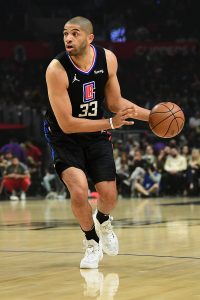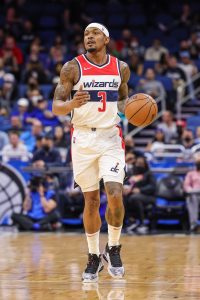We’re about a month-and-a-half removed from the 2022 NBA draft, and – as our tracker shows – 46 of the 58 players selected on June 23 have signed their first NBA contracts.
The 12 unsigned players are as follows:
- Toronto Raptors: Christian Koloko, F/C
- Detroit Pistons: Gabriele Procida, G
- Cleveland Cavaliers: Khalifa Diop, C
- New Orleans Pelicans: E.J. Liddell, F
- Denver Nuggets: Ismael Kamagate, C
- Indiana Pacers: Kendall Brown, F
- Minnesota Timberwolves: Matteo Spagnolo, G
- New Orleans Pelicans: Karlo Matkovic, F
- Washington Wizards: Yannick Nzosa, C
- Golden State Warriors: Gui Santos, F
- Cleveland Cavaliers: Luke Travers, G/F
- Milwaukee Bucks: Hugo Besson, G
Most of these prospects will likely spend the 2022/23 season playing in non-NBA leagues around the world. Procida, Diop, Kamagate, Spagnolo, Matkovic, Nzosa, Santos, Travers, and Besson are all good bets to be draft-and-stash players.
That essentially just leaves three 2022 draftees in limbo: Koloko, Liddell, and Brown.
A player selected within the first five picks of the second round, like Koloko was, virtually always receives a multiyear contract that includes at least a year or two of guaranteed money. It’s hard to imagine that won’t be the case for Koloko, despite the Raptors‘ roster crunch. Toronto already has 13 players on guaranteed contracts, with three players on partial guarantees vying for a regular season spot, so if Koloko signs, it would leave one fewer spot up for grabs.
It’s worth noting that once Koloko officially signs, he’ll be ineligible to be traded for 30 days, so it’s possible the Raptors are keeping their options open in case their Kevin Durant trade talks with the Nets get serious.
Toronto may also be mulling whether to use a portion of its mid-level exception to sign Koloko to a contract that spans three or four years. Taking that route, instead of signing him to a two-year, minimum-salary contract, would ensure he remains under team control for an extra season or two, but would hard-cap the Raptors for the 2022/23 season, since the club already used $6MM of its MLE to sign Otto Porter.
Liddell, meanwhile, suffered an unfortunate break to begin his professional career, tearing his ACL during the Las Vegas Summer League. Before he sustained that injury, the question was probably whether Liddell would receive a standard contract or a two-way deal. Now, the question is whether New Orleans still willing to sign him to a two-way contract or whether the team wants to use that slot on someone who could actually contribute on the court in 2022/23.
If they fill their two-way slots, the Pelicans would probably like to see Liddell sign a G League contract and spend the season rehabbing with the Birmingham Squadron before he signs his first NBA deal a year from now.
As for Brown, it remains to be seen whether he’ll begin the season on the Pacers‘ standard 15-man roster or on a two-way deal. For now, Indiana could go in either direction, but the club could be waiting to see whether there are any more trades to be made before training camp begins — if the Pacers were to complete a deal involving Myles Turner and/or Buddy Hield, the number of players they receive in that trade would have an impact on whether or not there’s room on the standard roster for Brown.
For example, if Indiana send Turner and Hield to the Lakers in exchange for Russell Westbrook and draft assets, then bought out Westbrook, it would open up two extra spots on the projected 15-man roster. In that scenario, signing Brown to a three- or four-year standard contract would make sense.

